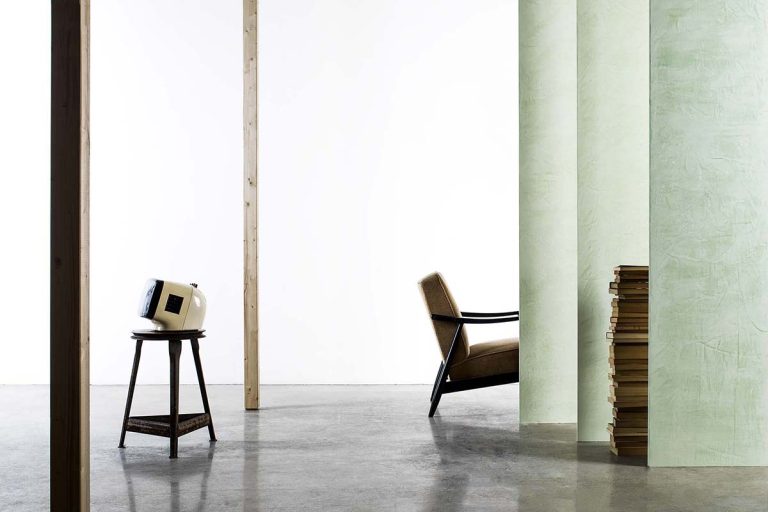Children’s and teenagers‘ bedrooms are normally rooms in a home that are not bound by the fashions and trends of the moment, as it is more important that they follow the growth of the kids and the evolution of their tastes and needs related to their main activities; of playing in the beginning, and of studying later. Every age has different needs.
THE NEONATAL AGE.
In the very first years of age, the furniture required for the so-called ’nursery‘ is relatively limited and standardised, but it is nevertheless pleasant to use pastel, delicate and bright colours to welcome the little ones into a dreamlike atmosphere, and to help parents enjoy relaxing moments in this space.
With the MARMORIN finish by Viero Decoratives some pastel colours can be inspired by the colour palette;
CHILDHOOD
From school age to adolescence, we normally try to design children’s rooms with furniture that often remains the same for several years, therefore it is very important to choose neutral tones, preferring soft, light-coloured woods such as pine, birch, beech and ash, or even choosing the „passe partout“ white for furniture to match any other colour chosen.
In this time of growth, preferences for colours and personal taste are stabilising and can therefore vary over time: it will be very useful to focus on varnishes and wall paints, as these will be the most important element, along with the choice of accessories and fabrics to personalise the room.
Children normally love bright colours and their bedrooms are filled with the toys and posters of their favourite cartoon characters, which also often adopt bright and vivid colours. Therefore, the most important thing is to bring balance to this blaze of colours.
Let the little ones suggest their favourite colour to us, but since they do not have the ability to think in „shades“, we will try to help them. If the child loves fuchsia, we will not paint the walls of the room in fuchsia, but we will choose bedspreads or pretty pictures in these bright shades and a softer shade of pink for the walls, which will make the whole look lighter.
If our child loves light blue, we can choose it cheerfully and intensely for the duvet cover or the bookshelf, but on the walls it is best to match it with lighter or duller tones tending to grey: the light blues and grey-blues of GHIBLI’s colour collection https://www.vierodecoratives.com/wp-content/uploads/2021/10/Ghibli_2018-color-collection.pdf, are beautiful.
If teenagers love red, a colour that is not easy to match in bedrooms but is always popular with young people because it expresses their vitality well, it will be important to match it with white walls or neutral colours such as beige and dove grey, or if you like darker colours, grey or cappuccino, the neutral colours in the ERAMETAL colour-collection or the ALLURE colour collection , are excellent.
ADOLESCENCE
Apart from particular predilections for one colour or another, it is also true that children, especially older ones, often look for ideas by surfing the Internet or accompanying friends on shopping trips and are in any case influenced by the trends of the moment: let’s take a look at some colour schemes linked to particularly trendy furnishing styles.
THE GREEN STYLE
Whether it is because the trend style is Boho-Chic or because the green attitude of the new generations has undoubtedly increased, nature also influences style choices in children’s rooms with the use of all shades of green, possibly accompanied by wallpaper with a natural subject, such as „Jungle“ wallpaper and wall finishes that seem to be borrowed from nature itself.
THE INDUSTRIAL STYLE
The Industrial style with its use of leather and black metal appeals to teenagers, having that slightly rustic, rock, scratched look like the NATIVO finish of the ‚Petra Apuana‘ collection.
THE ROMANTIC ‚SCANDI-CHIC‘ STYLE
The Scandinavian-inspired feminine style combining grey and pink is also very fashionable and will appeal to the romantics (you will find excellent shades of pink in the MARMORIN colour palette)
A trendy and quite unusual combination is to combine the „orange-brick“ colours with soft pink and powdery tones (two choices with the clay colour MM33 and the powdery pink MM32 both from the MARMORIN COLOR COLLECTION) in this specific case the more intense colour should be reserved for a single wall, or if you want to divide the wall horizontally you can use the clay colour at the bottom up to 1 metre high and then the other colour at the top, separating them possibly with a white strip or a 5 or 10 cm high wooden frame.
So what are you waiting for to involve your children with the endless possibilities of Viero Decoratives?



